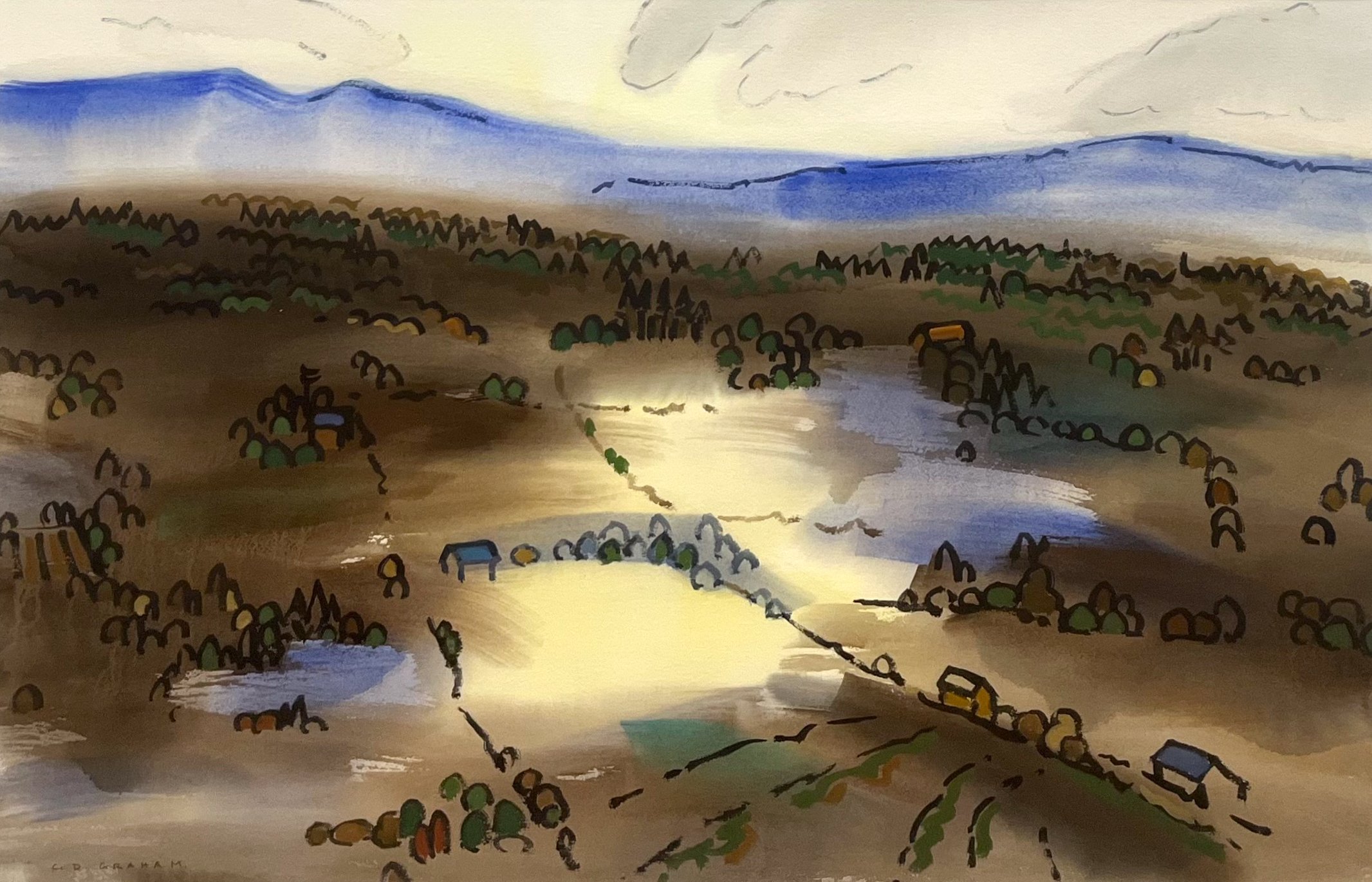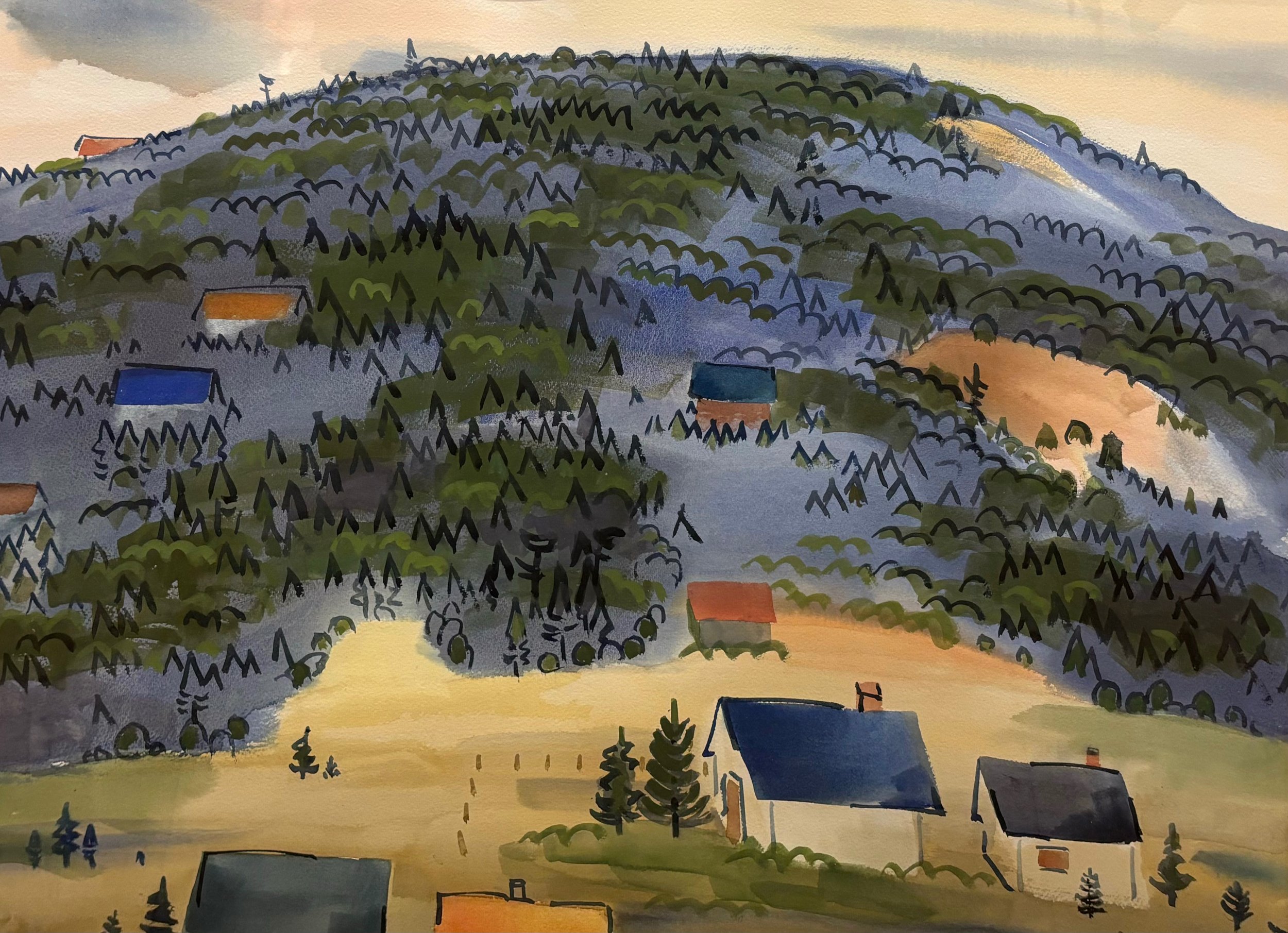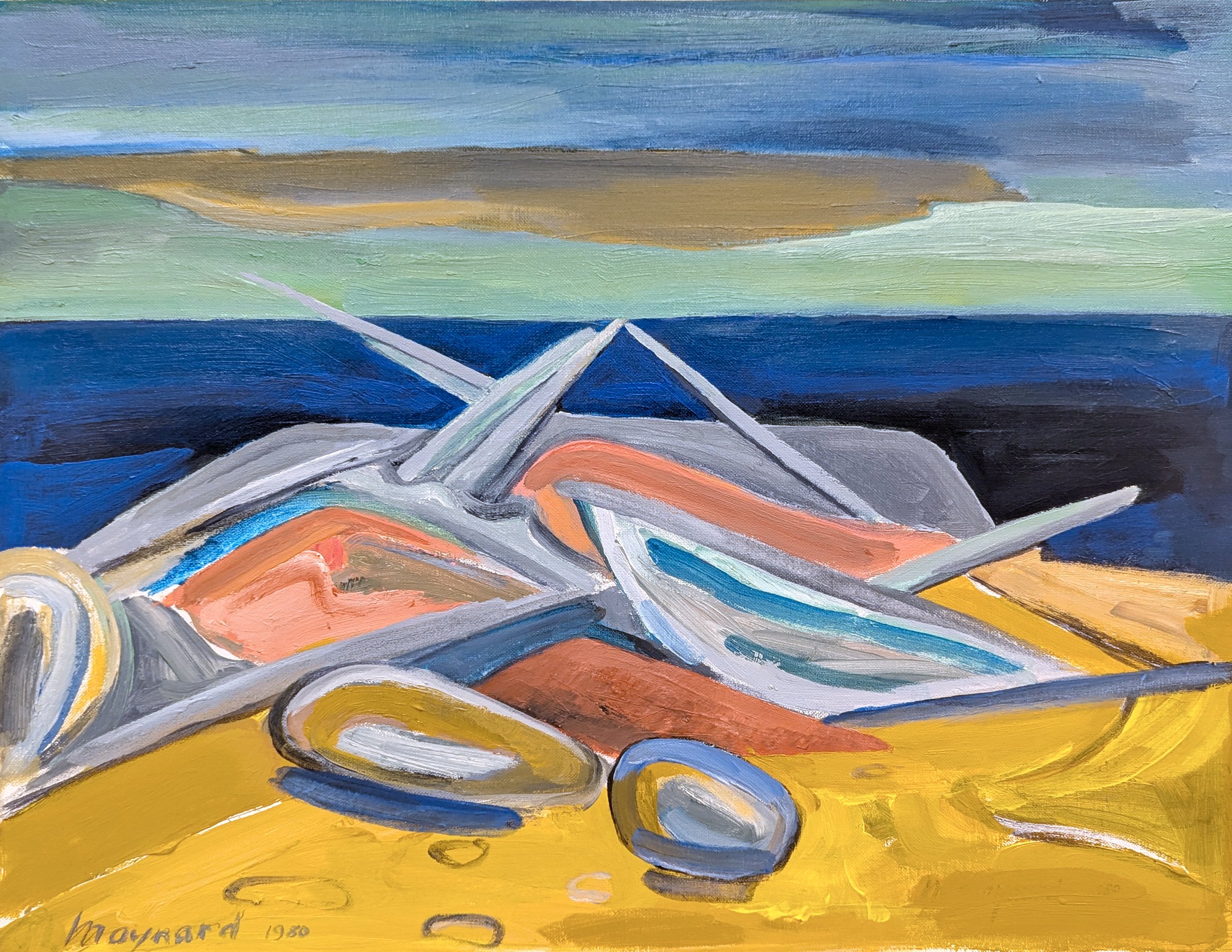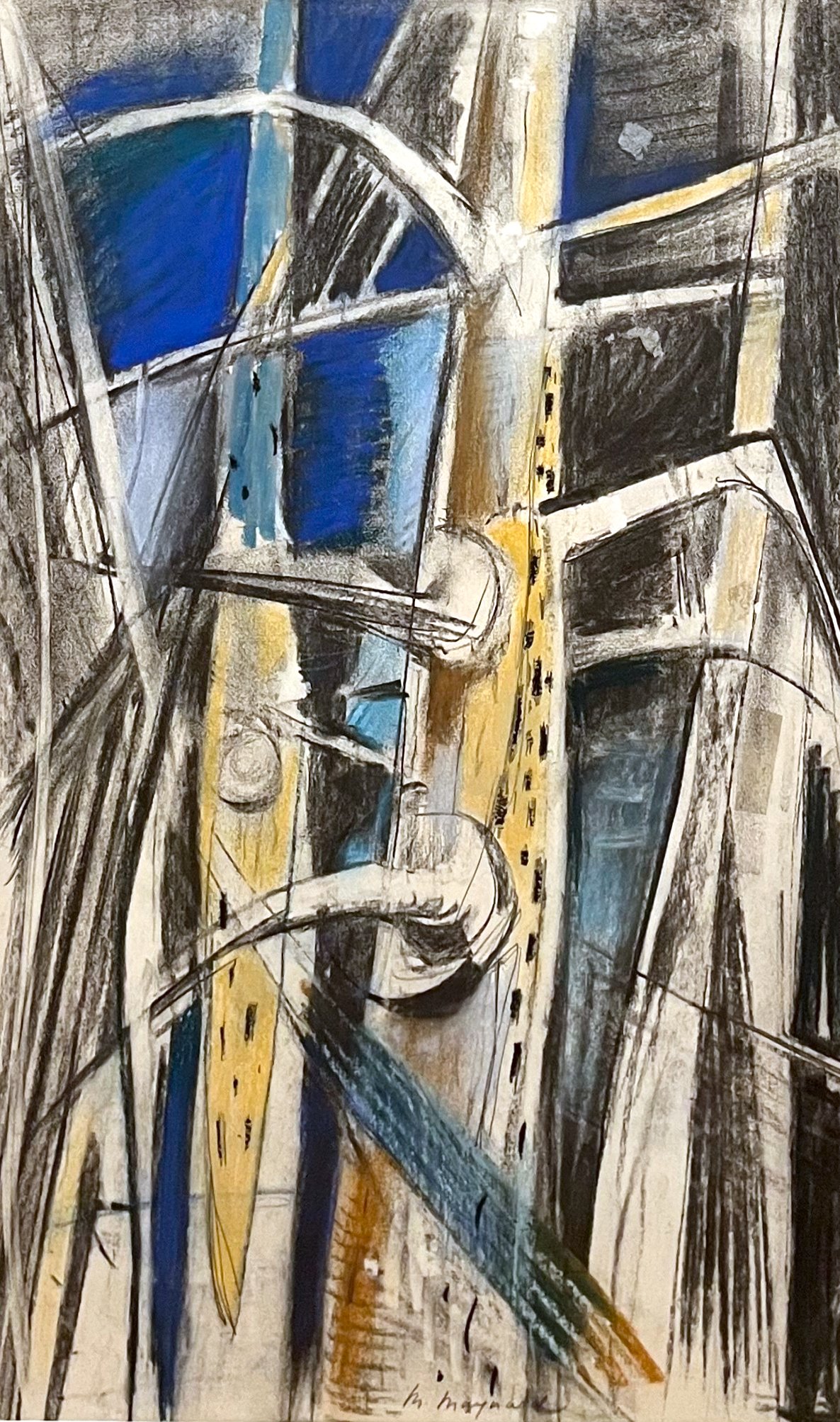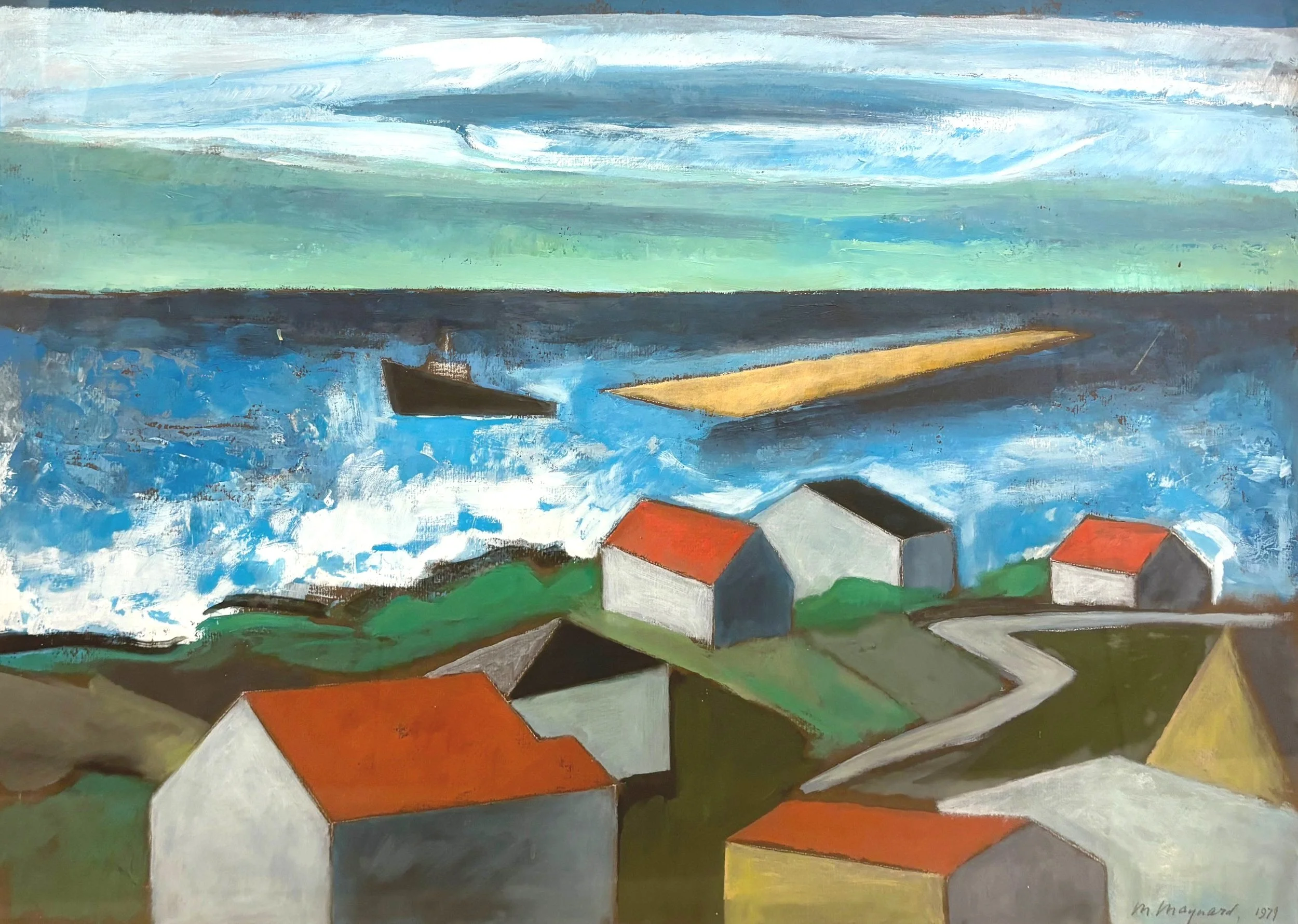Max Maynard & Colin Graham
/February 8 - 21
This exhibition pairs two major figures of Victoria’s 20th century arts community. Max Maynard helped bring forward modernist ideas in the 1930’s with Emily Carr and Jack Shadbolt. His career led to work in the United States returning after retirement in the 1970s. Colin Graham arrived in the 1950s after studies in England and California to work as the founding director of the Art Gallery of Greater Victoria. He was also a member of the famous Limners group. Both artists helped shape the Victoria arts community and regional style we know today.
Colin Graham came to painting later in life. His paintings are the product of years of experience working at a high level in the arts. Just like the artists of the Limners group of which he was a member, Graham was immersed in the conversations and ideas that pushed modern art forward in the postwar years. He contributed through his role as Director of the Art Gallery of Greater Victoria by programming exhibitions and building the collection that fostered this modernist community. His work is elegantly simple. His idea is that life (particularly in Victoria) is beautiful. His paintings are joyful expressions of his experience in the city. They show community, such as people gathering at the beach, or gossiping on a bench. They capture the energetic dance of boats in the harbor and the simplicity of country life. His talent is seen in the way he avoids making these paintings too sentimental. He achieves this by using his understanding of technique to paint in a minimal and efficient manner that distils forms to basic shapes. Additionally he uses a subtle and balanced palette that brings an elegance to his joyous compositions.
Max Maynard - forest and log - 35 × 24- oil on paper - This painting was the cover of Maynards 1983 retrospective at the art gallery of greater victoria
Maynard was born in India in 1903 and immigrated to Canada in 1912. He was an early and prominent member of the B.C. Arts community. He exhibited in 1928 with the Islands Arts and Crafts Society and had work exhibited at the Seattle Art Museum in 1930. In 1936 he was awarded the Beatrice Stone Award for his painting, Cowichan Lake Landscape. In the 1940’s he was a director of the Vancouver Art Gallery. There was no market to make a living selling paintings which led Maynard to teaching. He spent the majority of his career as an English professor at the University of New Hampshire. From the 1950s to 1970s he produced much less. After his retirement, Maynard devoted the rest of his life to painting. Maynard’s career came full circle when he returned to Victoria after his retirement, and from the late 1970s until his death in 1982, Maynard saw a great period of productivity in his work. He was back in the place that inspired his work to begin with, now with a lifetime of experience. The later works hold true to the 1930s paintings but bring broader influences to their style. Instead of pushing the acceptance of modernist ideas as he was in the 1930s he is able to distill the many changes in the global art world, expressing this region in a distinct manner that combines his post impressionist roots with abstraction.


